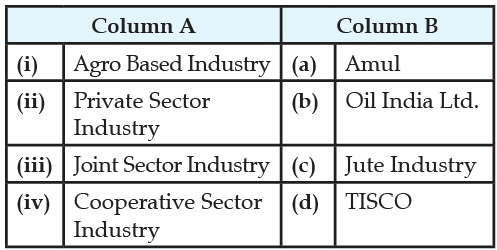Geography Mock Test- 4 - Class 10 MCQ
30 Questions MCQ Test - Geography Mock Test- 4
In which kind of rocks are the minerals deposited and accumulated in the strata's?
Which out of the following minerals is formed as a result of evaporation in the arid regions?
How much hydroelectric power of the total electricity produced is contributed in India?
Which of the following sedimentary minerals is formed as a result of evaporation, especially in arid regions?
Which of the following regions of India contain most of the reserves of coal, metallic minerals, mica and many other non-metallic minerals?
Which of the following led to expansion of the fertiliser industry?
The earth is occupied mostly with water yet freshwater resources are only
The means for the movement of goods and services from their supply locations to demand locations can be termed as which of the following?
India has one of the largest networks of which of the following modes of transport?
Which one of the following soils found in India is the most useful for agriculture?
Utilizing land for a variety of purposes is known as ______.
Which one of the following cities has emerged as the ‘electronic capital’ of India?
Which of the following industries belongs to the category of heavy industries?
Which of the following techniques of cotton textile production came into use after the 18th century?
Which out of the following minerals is formed by the decomposition of surface rocks, and leaves a residual mass of weathered material?
Which out of the following minerals occurs in the sands of valley floors and the base of hills?
Which of the following is the principal crop grown in areas of Intensive Subsistence Farming?
Rice is a subsistence crop in Orissa. In which of the following states, is rice a commercial crop?
Which of the following means of transportation is used to transportmcrude oil, petroleum products and natural gas?
Which of the following networks of pipeline bring mineral oil to the refinery of Barauni and petrochemical complex of Haldia?
Which of the following modes of transport is fuel efficient and environment friendly?
“The species that are not found after searches of known or likely areas where they may occur” are known as:
Which one of the following is a medicinal plant used to treat some types of cancer?
Which of the following was the first port to be developed soon after Independence?
Which of the following is the oldest artificial port and the second most important port of the country?
Match the followings item given in Column A with those in Column B:















